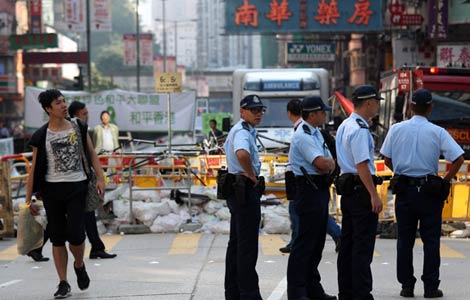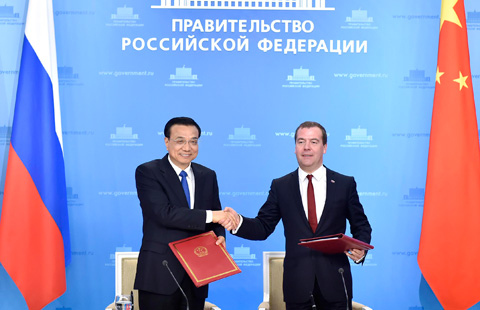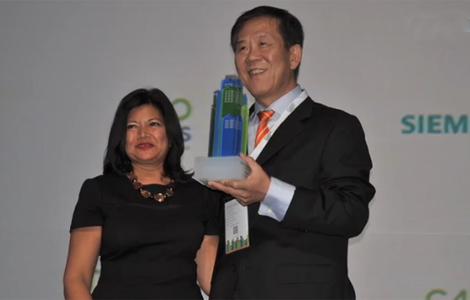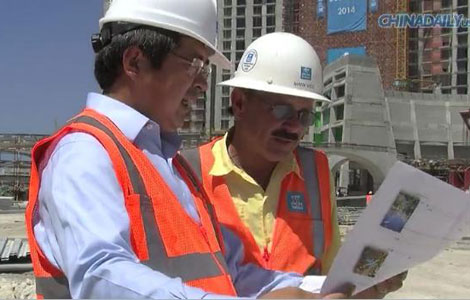Building codes and pollution control
Updated: 2014-10-15 08:30
By Hal Harver(China Daily USA)
|
||||||||
Raising energy efficiency is the easiest way for the country to reduce its greenhouse gas emissions and improve its air quality
The whole world is looking for ways to reduce greenhouse gas emissions and conserve energy. The most powerful strategy is to find solutions that handle both problems at once. For example, if new buildings are built with modern, energy-efficient technologies, they will drastically cut energy waste, and thus carbon dioxide, the principal greenhouse gas. At the same time, they will cut their demand for electricity, cooling, and heat, which will minimize the use of power plants and heating boilers.
I mention buildings because world-class building codes, properly enforced over time, can cut their energy consumption by up to 80 percent. We know this because California has now achieved it in new buildings compared to those constructed before the present code was introduced. New York City's mayor has calculated that three-fourths of his city's energy is consumed in buildings, so he is launching a new initiative to make them more efficient. China, too, can ensure its new buildings are efficient and built to last.
Energy efficiency has much more potential than most people realize. The pattern holds in industry, transportation, and other areas. Slash energy waste and you reduce greenhouse gas emissions and pollution.
What are the implications for China? It means that, in drafting the next five-year plan, there are terrific opportunities to win both the air quality and pollution battles, and help combat climate change. International experience suggests that carefully designed standards and pollution control strategies, if properly enforced, can make an enormous difference to air pollution and help with climate change.
China has some excellent experience on this front. China's energy efficiency standards for refrigerators, for example, will save around a billion tons of carbon pollution, even as they cut air pollution - sulfur oxides and nitrogen oxides - by millions of tons each. Fuel use in cars can be cut by 40 percent because of fuel efficiency standards.
But there is much more to be done. Energy efficiency alone cannot solve the air pollution and climate change problems, but it is the biggest and cheapest step. As Vice-Minister Xie Zhenhua of the National Development and Reform Commission said, "The cause of air pollution and climate change is the same - the burning of fossil fuel."
Many policies and measures, such as reducing coal consumption and controlling the number of motor vehicles, tackle both climate change and air pollution at the same time.
Other areas where China can make efforts to win the air pollution and climate change battles include drastically expanding renewable energy, a world-class air pollution control system and a new type of urbanization.
China's manufacturing abilities have driven the price of wind and solar energy down by 50 and 80 percent, respectively, in the last five years. This means that a clean energy future need not cost more than a dirty one - so the proper response is to increase the use of those technologies at a rapid pace.
Second, China needs a world-class air pollution control system. This will require not only setting strong standards for smoke stacks and tailpipes, but building the institutions that can monitor emissions, issue permits, and enforce reductions. There is no substitute for a modern environmental enforcement system, including independent inspectors with proper training and in sufficient number to get the job done.
Finally, there are fantastic opportunities in rethinking urbanization. Well-designed cities encourage biking and walking. Transportation should de-emphasize the car and instead offer clean, fast, efficient public transport. New cities should be laid out with a highly permeable grid of smaller blocks with mixed uses. In China, this kind of development pattern has cut transportation energy use by more than 50 percent.
These ideas together - an aggressive push for energy efficiency, the rapid adoption of renewable energy technology, an air pollution system with serious monitoring and enforcement, and a new approach to city layout - create a recipe for a clean and beautiful China, and a prosperous one too.
The author is CEO of Energy Innovation LLC and also a senior fellow at the Paulson Institute.
(China Daily USA 10/15/2014 page11)

 White House also produces harvest joy
White House also produces harvest joy
 Premier Li arrives in Rome for official visit to Italy
Premier Li arrives in Rome for official visit to Italy
 Universal to open theme park in Beijing
Universal to open theme park in Beijing
 Child bride 'marries' 37-year-old
Child bride 'marries' 37-year-old
 New York celebrates 70th Annual Columbus Day
New York celebrates 70th Annual Columbus Day
 HK police vow minimum force to remove protest road barriers
HK police vow minimum force to remove protest road barriers
 China, Russia sign deals on energy, high-speed railways
China, Russia sign deals on energy, high-speed railways
 Future of US-China movies to be discussed
Future of US-China movies to be discussed
Most Viewed
Editor's Picks

|

|

|

|

|

|
Today's Top News
US offers $45m bounty for info on 8 terrorist leaders
Chinese, Italian companies sign $10b
Costco joins Alibaba's online portal
Ebola: Rapid-response team set up
NBA star dishes on 2008 Olympics and Yao Ming
Taiwan photographer depicts NYC on grand scale
Premier Li arrives in Rome for official visit to Italy
Chinese tourists rank US No 3 spot
US Weekly

|

|







